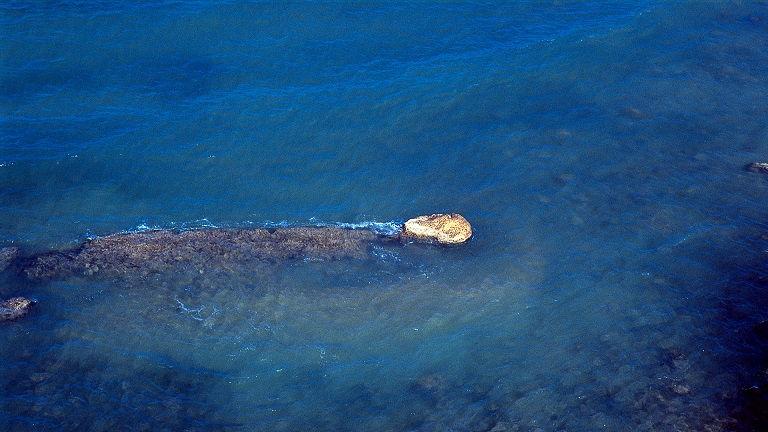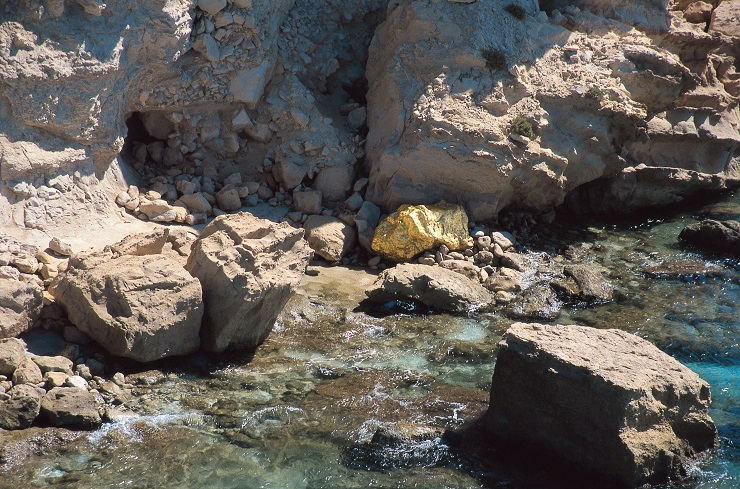Stones
Two decades since the realisation of Austin Camilleri’s installation, Nikki Petroni reflects on its impact and legacy.

Austin Camilleri’s Stones is the most ambitious local site-specific installation to date. It marked Malta’s perimeter as its site without consuming the space in between. Back in 1999, installation art was still a burgeoning medium on the islands, yet Camilleri masterfully exploited its artistic potential. The boundaries of space and time were transcended as gilded masonry appeared in Valletta, Dingli Cliffs, Xwejni Bay, and Delimara. The golden enveloping of the stones referred to the most divine colour used in sacred art, and hence a ubiquitous presence in Malta’s churches. With the realisation of the project, the medieval was made contemporary, the natural made urban, and Maltese art was imbued with a new dimension in its ability to capture the essence of identity.
Twenty years on, it is the photographic documentation that allows us to witness Camilleri’s poetic visual statement on place and history. Stones drew the spectator to Malta’s terrain. The serene sound of the sea’s waves and the clamour of Valletta’s replenishing flow at the urban gateway were shown as prominent contrasting elements of the country’s topography.
Through a description of the installation on how “the artist marks north, south, east and west points of the whole national territory to delineate its land, labelling it as ‘museum’,” Vincenzo Bonello defined Malta as one large St. John’s Co-Cathedral. In other words, the proposition of a country as total work of art. Camilleri’s ‘museum’ installation implies its spatial demarcation as static, which it was not. The stones were susceptible to natural conditions, which eventually led to the removal of the gilding, returning the stones to their original state.


The installation utilised the notion of the Duchampian ready-made without appropriating the quality of visual indifference. The stones were found but their appearance altered to elevate their status to one replete with artistic and spiritual significance. Their placement created a narrative linking geography to history, and to centuries of artistic production. Stones was an ode to a visual arts tradition that reinvented this same legacy. It was a comment on the transition of identity across time and the strength of ideas that continue to exist, albeit under new form.
Camilleri’s installation is today more relevant than ever. The climate crisis and Malta’s ravenous urbanisation are at the fore of present-day politics. This discussion is being addressed by the contemporary art scene with exhibitions and performances, and is the subject of the 2020 APS Mdina Cathedral Contemporary Art Biennale. The latter asks whether the arts can play a role in regaining a paradise lost. Stones positively affirmed that question, proving that art can reveal overlooked beauty that is too often taken for granted, and reignite its meaning as well as provoke new questions. The installation’s anniversary is also an event to reflect on such environmental change. Camilleri’s Stones did so without calling for any nostalgic sentiment.









